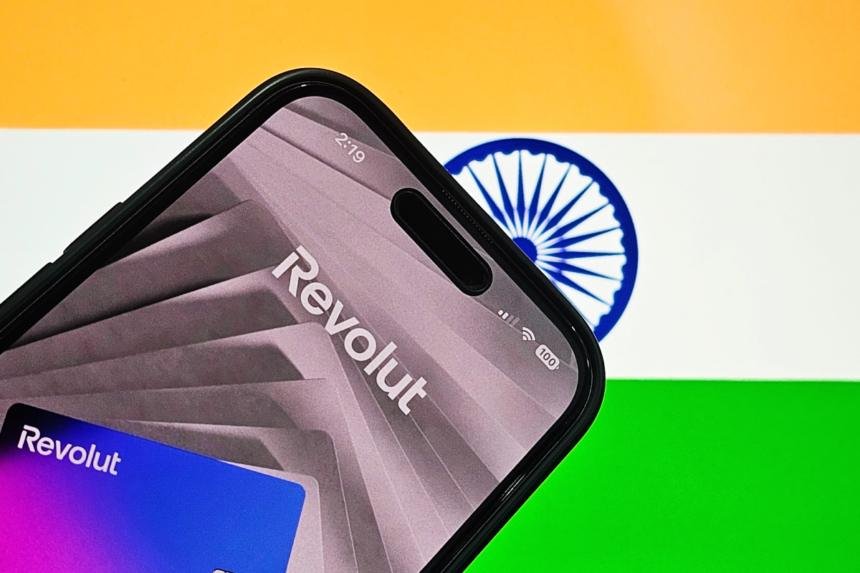Revolut Launches in India: Aiming to Transform Cross-Border Payments
British fintech company Revolut has officially launched its services in India, targeting a significant gap in the country’s cross-border payment landscape. With an estimated $30 billion spent by Indians abroad annually, the company highlights the staggering $600 million lost in bank fees, which its India head, Paroma Chatterjee, describes as “criminal.” This launch marks a pivotal moment in India’s financial services sector, which has long been dominated by traditional banks.
The Need for Change in Cross-Border Payments
Historically, cross-border payments in India have been the domain of banks, which often impose hefty fees for currency exchange and international transactions. Chatterjee noted that customers typically rely on their banks for foreign exchange services, leading to exorbitant charges that can deter many from utilizing these services. “It has been the preserve of banks,” she stated, emphasizing the need for a more consumer-friendly approach.
Revolut’s entry into the Indian market is not merely a business expansion; it represents a shift in how financial services can be delivered. The company aims to provide a more transparent and cost-effective solution for cross-border payments, challenging the status quo of traditional banking.
Strategic Moves Leading to Launch
Revolut’s journey to launch in India began in 2021, with the company acquiring Arvog Forex in 2022 to secure the necessary licenses for remittance and multi-currency account services. In April 2023, it received a prepaid payment instrument (PPI) license from the Reserve Bank of India, enabling it to issue prepaid cards and integrate with the government-backed Unified Payments Interface (UPI).
These regulatory approvals are crucial for Revolut as it seeks to compete with established banks and other fintech players in India. The company is targeting over 150 million digitally savvy Indians aged 25 to 45, with ambitious plans to onboard 20 million users by 2030 and process transactions worth at least $7 billion.
A Differentiated Customer Experience
Chatterjee emphasized that the PPI license allows Revolut to offer a unique customer experience compared to competitors that rely on bank partnerships. “We can deliver the kind of customer experience that we want to deliver,” she explained. The fintech plans to provide a prepaid wallet with UPI support, a domestic Visa card, and an international multi-currency Visa card. Additionally, it will introduce accounts for children and teenagers linked to their parents’ profiles, along with budgeting tools to help users manage their finances.
Revolut’s platform will also facilitate both domestic and international payments, including same-day remittances through local bank partnerships. This capability is particularly significant in a country where remittances play a vital role in the economy.
Rigorous Onboarding Process
In contrast to many Indian fintech companies that employ minimal know-your-customer (KYC) checks for quick user onboarding, Revolut will implement a full-KYC process. This includes verifying users against global sanctions lists, such as those maintained by the Office of Foreign Assets Control and the United Nations. Chatterjee believes this approach will attract “high-intent customers” who are serious about using the platform.
“Somebody would do that only if they’re interested in using the product,” she noted, indicating that the quality of customer engagement is a more important metric for success than sheer numbers. This focus on depth over breadth aligns with Revolut’s global strategy, where it has successfully maintained a profitable user base.
Measuring Success Beyond User Numbers
Chatterjee pointed out that while some companies boast of having hundreds of millions of customers, Revolut’s success is measured by user engagement and profitability. With 65 million customers across 39 countries, the company processes over $4 billion in transactions monthly, generating significant profits. This model underscores the importance of active user engagement, which Revolut aims to replicate in India.
The fintech has already garnered a waitlist of over 350,000 potential users in India, with plans to onboard them before fully opening the app to new users. The timeline for this launch will depend on how quickly the company can clear the waitlist and complete necessary KYC and anti-money laundering checks.
Competitive Landscape
Despite its ambitious plans, Revolut will face stiff competition in the Indian market. While traditional banks have historically dominated foreign exchange services, several fintech companies, including Niyo, Scapia, Fi, and BookMyForex, are already active in the cross-border and remittance sectors. These competitors have established a foothold in the market, making it essential for Revolut to differentiate itself through superior service and innovative offerings.
Investment and Workforce
Revolut has committed $45 million to kickstart its operations in India, focusing on localizing its technology to comply with the country’s data sovereignty regulations. The company plans to invest further as it scales its operations. Notably, of Revolut’s 10,000 global employees, approximately 3,500 are based in India, making it the company’s largest workforce. This local presence is expected to enhance its ability to tailor services to the Indian market.
Conclusion
Revolut’s entry into India represents a significant shift in the landscape of cross-border payments, aiming to provide a more efficient and cost-effective alternative to traditional banking services. With a focus on regulatory compliance, customer experience, and user engagement, the fintech is poised to challenge established players in the market. As it navigates the competitive landscape, Revolut’s success will depend on its ability to deliver on its promises and meet the evolving needs of Indian consumers.










